History > QUESTIONS & ANSWERS > HIST 410 Final exam.docx new text questions and answers whole solution solved here (All)
HIST 410 Final exam.docx new text questions and answers whole solution solved here
Document Content and Description Below
HIST 410 Final exam.docx new text questions and answers whole solution solved here Question 1(TCO 6) The Versailles Treaty officially ended World War I. What did it do specifically? Made Franc... e admit responsibility for starting the war Required Austria-Hungary to pay reparations Forced Germany to surrender territory All of the above Question 2(TCO 6) In 1917, as World War I raged through Europe, Russia finally broke through the German army and drove into Germany. defeated the Austrians and invaded the Balkans. experienced two revolutions and sued for peace. was completely overrun by the Germans. Question 3(TCO 5) In 1922, Joseph Stalin was made head of the government. general secretary of the Communist party. general secretary of the Comintern. head of the Red Army. Question 4(TCO 5) What event marked the beginning of World War II? The Nazi-Soviet Pact The German invasion of Poland The Anschluss Germany's annexation of the Sudetenland Question 5(TCO 9) What city was divided during the Cold War and became a hotspot for espionage and intrigue? Paris London Berlin Rome Question 6(TCO 9) China's communists finally won the long civil war under the leadership of Mao Zedong Kim Il Sung Syngman Rhee Chiang Kai-shek Question 7(TCO 8) What was the intention of the Marshall Plan? To rebuild the military power of western Europe To help the Japanese economy recover from the war To rebuild the economies of war-shattered Europe To prevent the spread of Communism into Africa and Asia Question 8(TCO 6) Why did India become two countries after independence in 1947? Mohandas Gandhi insisted on two nations. The British government did not want a country dominated by Islam. Hindu leaders feared discrimination in a Muslim-majority India. Muslim leaders feared discrimination in a Hindu-majority India. Question 9(TCO 2) Gamal Nasser was a pan-Arabist, secular, national leader. an advocate of fundamentalist Islam. a Turkish leader. a loyal ally of the United States. Question 10(TCO 2) Following the Arab-Israeli 1967 war, the Israelis and Palestinians agreed to negotiate. the Israelis demanded direct negotiations, and the Arabs demanded Israel’s withdrawal from the occupied territories prior to negotiations. the Arabs demanded Israeli withdrawal from the occupied territories and face-to-face negotiations. the United States and U.S.S.R. negotiated a settlement to the conflict. Question 11(TCO 4) The weakness of communist satellite governments in the Cold War was most apparent in Poland. Romania. Albania. Hungary. Question 12(TCO 4) The only Eastern European country that had widespread bloodshed in 1989 was Romania Czechoslovakia Bulgaria Poland Question 13(TCO 7) One reason that the United States invaded Iraq in 2003 was Iraq was thought to have WMDs (weapons of mass destruction). Iraq had invaded Israel. Iraq was home to al-Qaeda. Iraq invaded Kuwait. Question 14(TCO 10) Match the terms in Column I with the descriptions in Column II. Fidel Castro Question 15(TCO 3) Match the terms in Column I with the descriptions in Column II. Globalization Question 16 (TCO 1, 2) Identify and analyze two causes of World War I. Use historical examples to support your answer. Question 17(TCO 5, 11) Analyze how the stipulations of the Treaty of Versailles that ended World War I, along with the Great Depression of the 1930s, contributed to the outbreak of World War II. Then analyze significant ways in which World War II changed the world. Make sure you use enough historical details to support your answer. Question 18(TCOs 9, 10) Identify and analyze the main events of the Korean War and Cuban Missile Crisis. Then assess how these events affected the relationship between the United States and the Soviet Union. Make sure you use enough details to support your answer. Question 19(TCOs 4, 8) Analyze how the Solidarity (Solidarnosc) movement in Poland led to the collapse of communism in Poland. Point out what events led to the growth of the Solidarity movement, and then identify and analyze the events that followed Gorbachev's policy of political pluralism in Poland. Use specific details to support your answer. Then evaluate the relative success of democracy and capitalism in Poland, after the end of the Cold War. [Show More]
Last updated: 1 year ago
Preview 1 out of 6 pages
Instant download
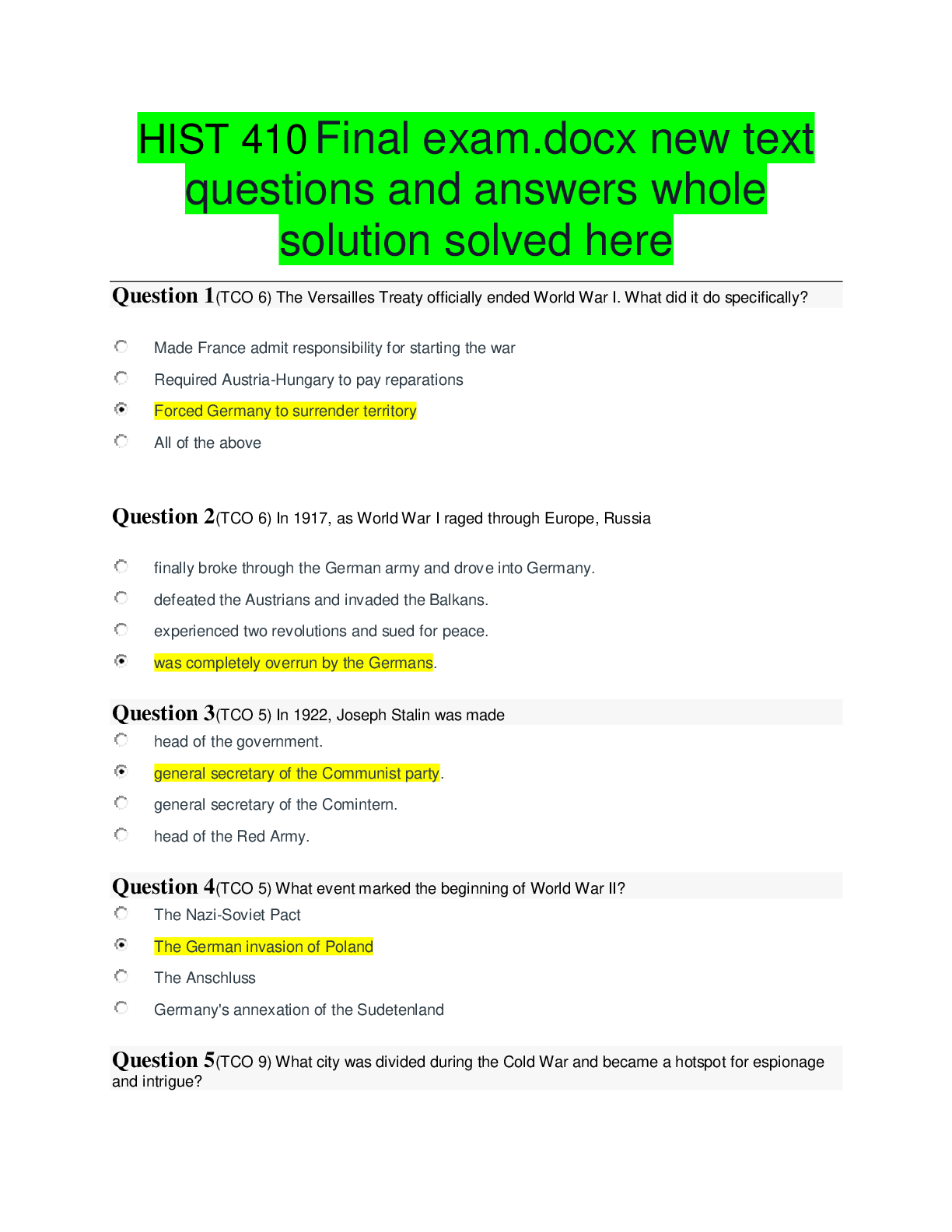
Buy this document to get the full access instantly
Instant Download Access after purchase
Add to cartInstant download
Reviews( 0 )
Document information
Connected school, study & course
About the document
Uploaded On
Dec 31, 2020
Number of pages
6
Written in
Additional information
This document has been written for:
Uploaded
Dec 31, 2020
Downloads
0
Views
37




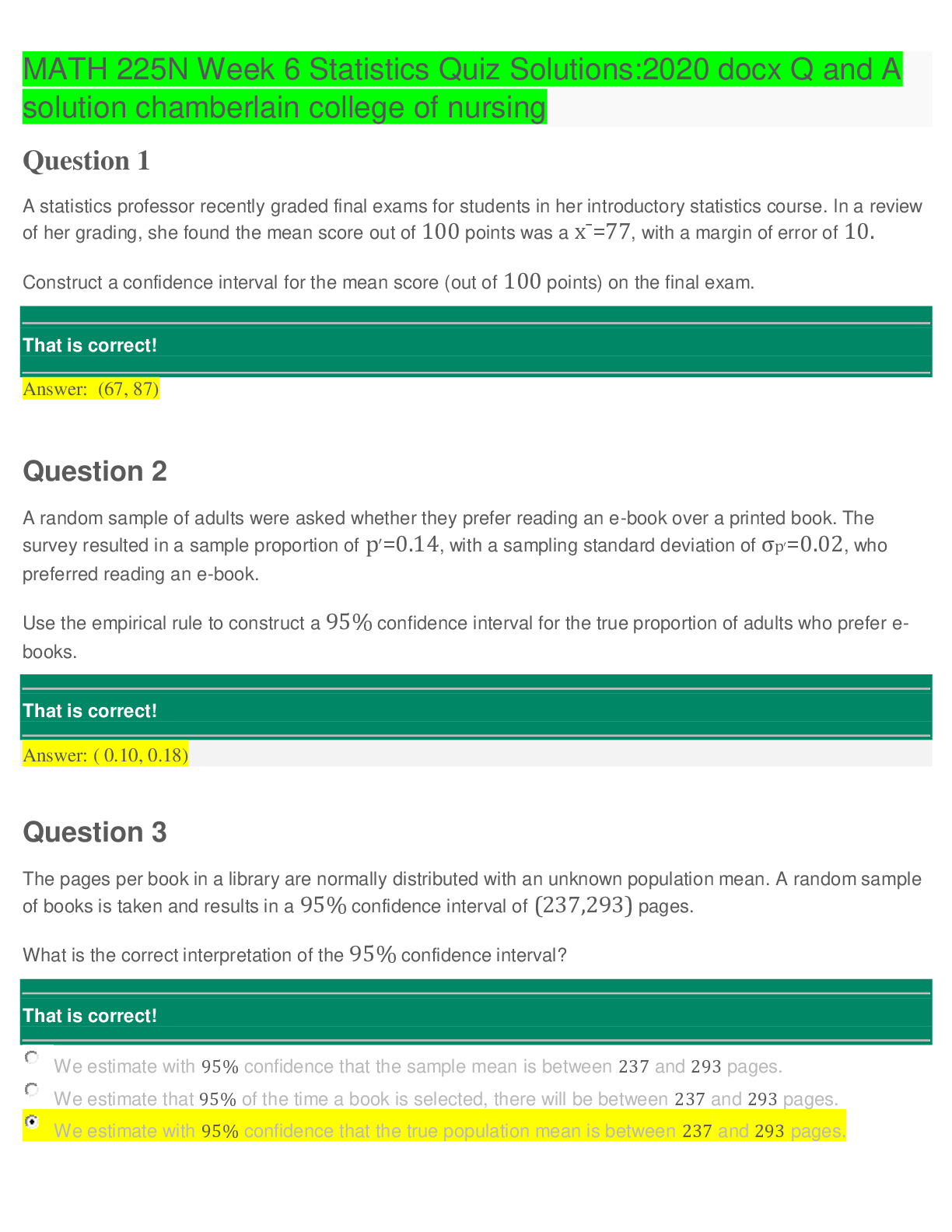

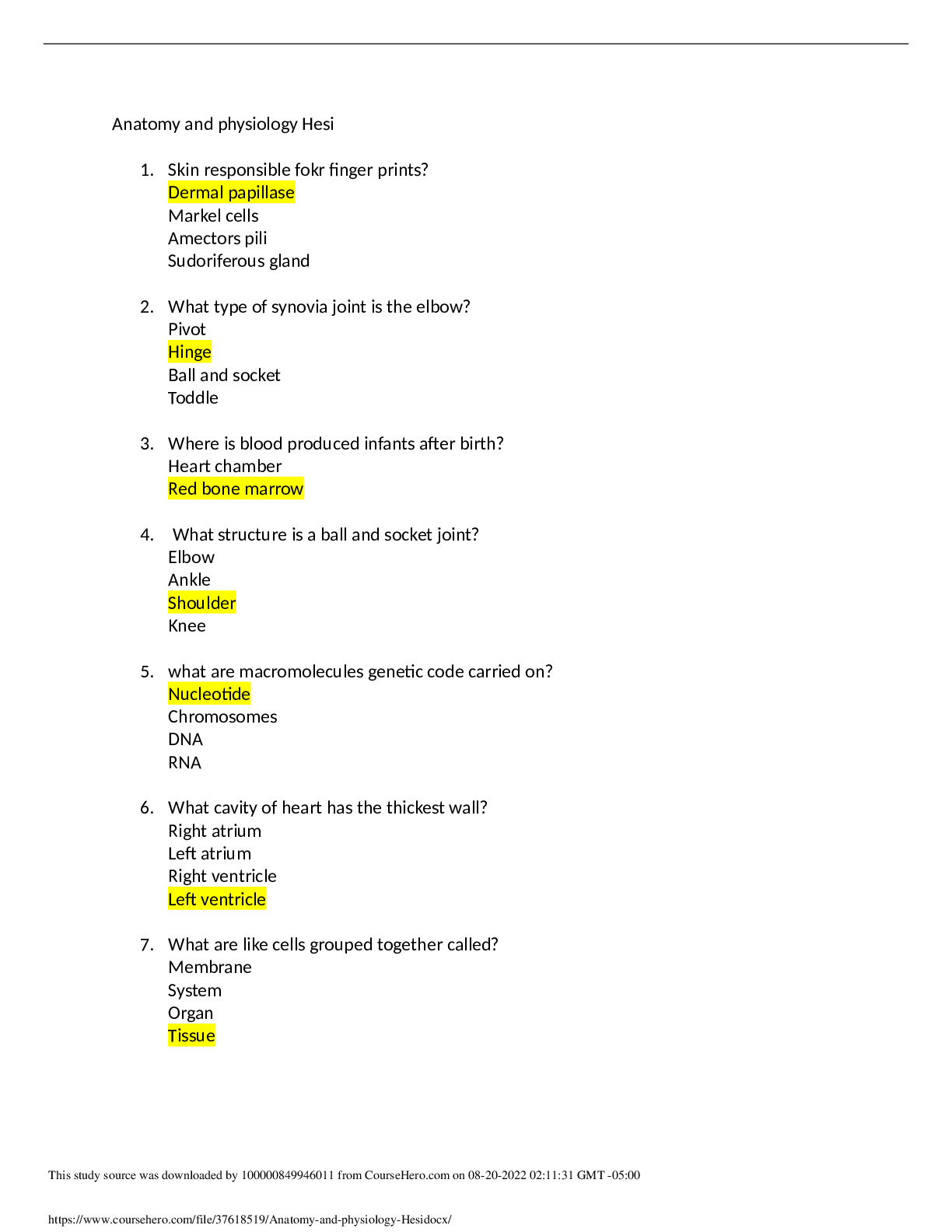
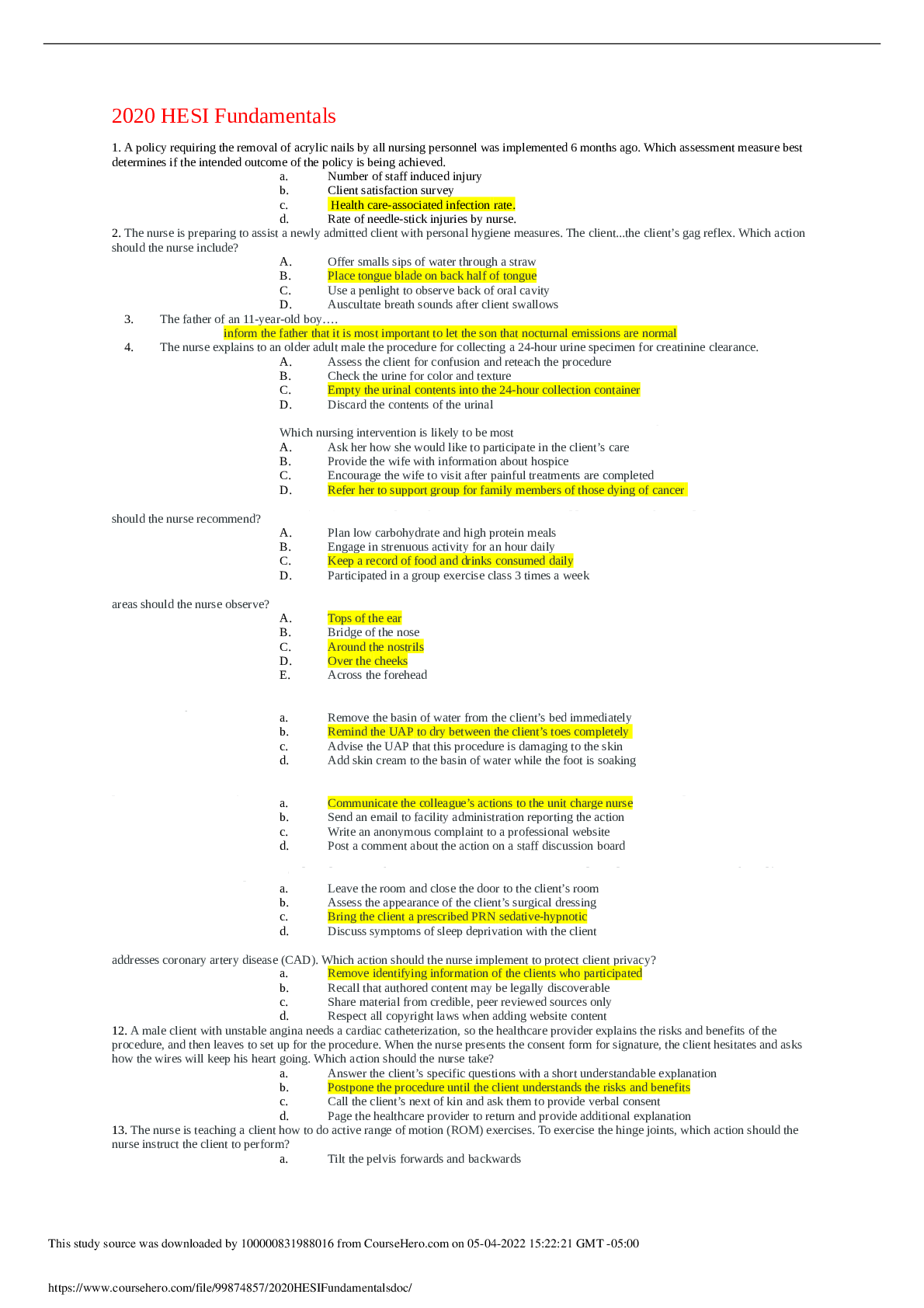

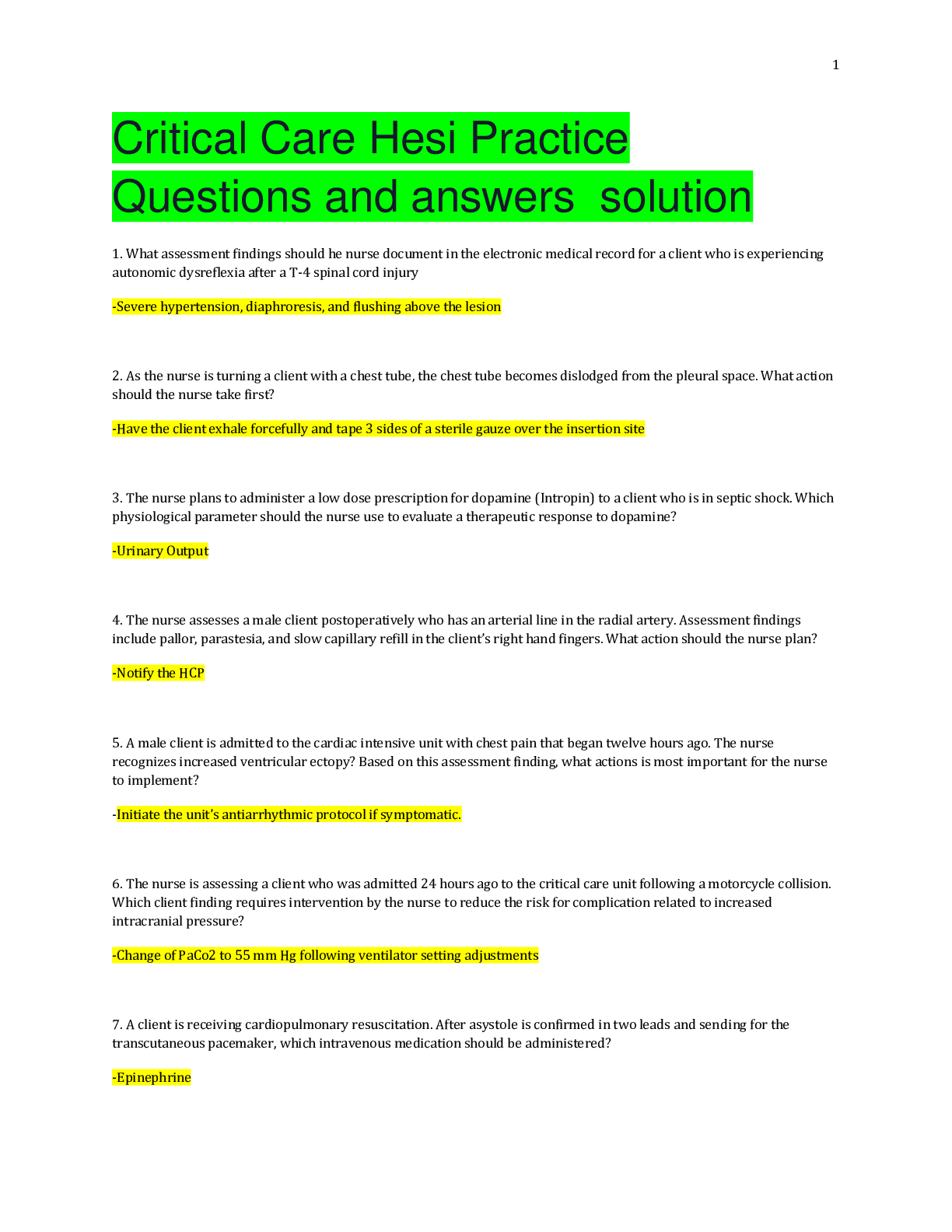
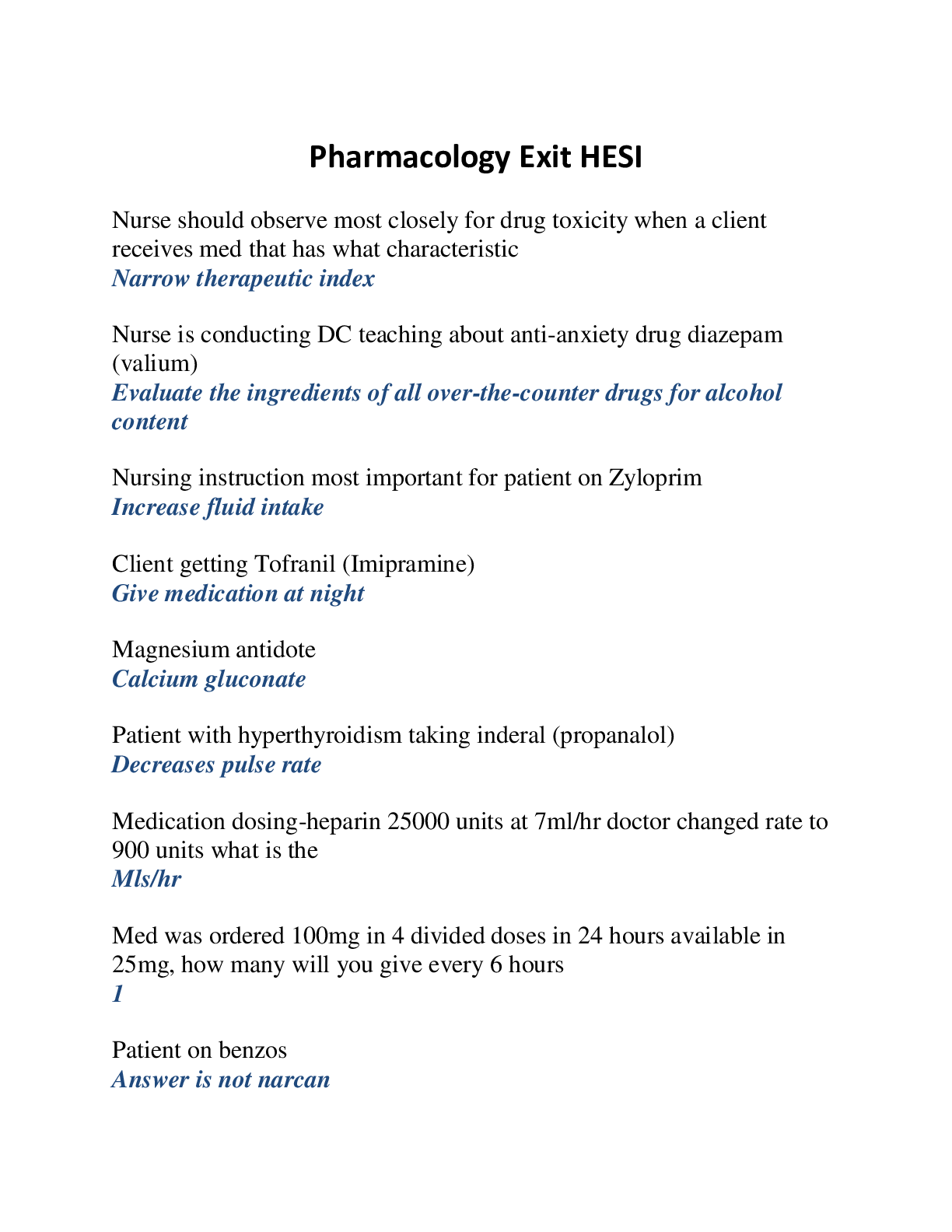
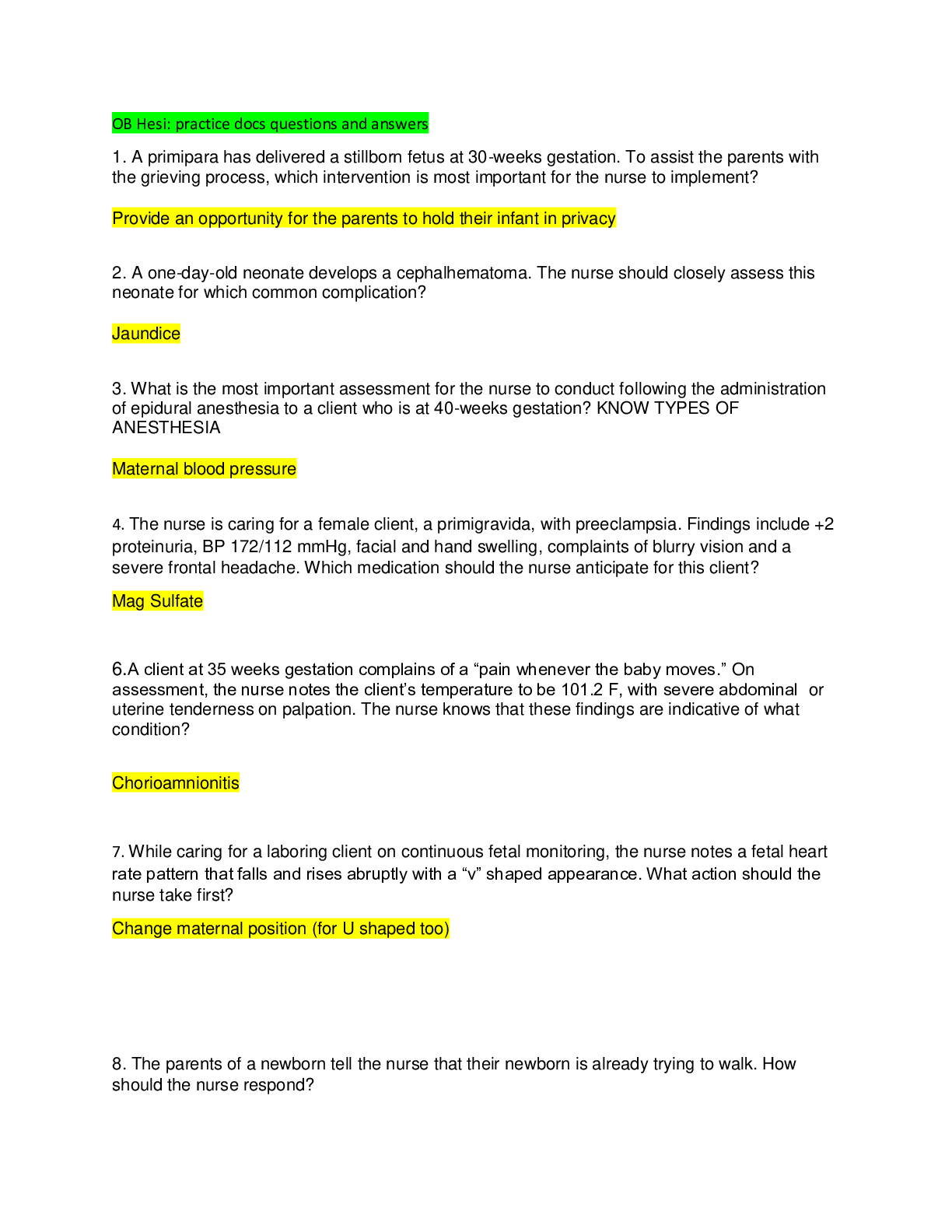

.png)
.png)

